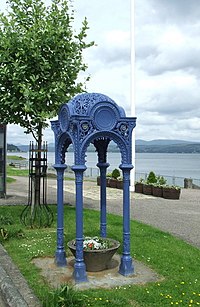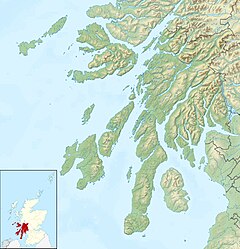| Kirn | |
|---|---|
 Cast iron fountain stand on the shorefront at Kirn. | |
Location within Argyll and Bute | |
| Population | 5,198 (2013 Est) Including; Kirn, Hunters Quay and Sandbank. [1] |
| OS grid reference | NS 18100 78200 |
| Council area |
|
| Lieutenancy area |
|
| Country | Scotland |
| Sovereign state | United Kingdom |
| Post town | DUNOON, ARGYLL |
| Postcode district | PA23 |
| Dialling code | 01369 |
| UK Parliament |
|
| Scottish Parliament |
|
Kirn is a village on the Cowal Peninsula, in Argyll and Bute in the Scottish Highlands on the west shore of the Firth of Clyde on the Cowal peninsula. It now forms part of the continuous habitation between Dunoon and Hunters Quay, where the Holy Loch joins the Firth of Clyde. It originally had its own pier, with buildings designed by Harry Edward Clifford in 1895, [2] and was a regular stop for the Clyde steamer services, bringing holidaymakers to the town, mostly from the Glasgow area.




